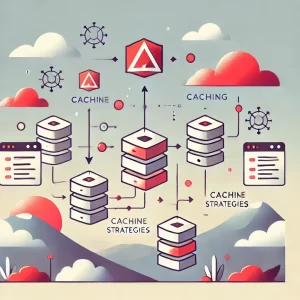Introduction
Caching is an essential strategy for optimizing Laravel applications. By implementing effective caching methods, you can enhance your application’s performance, reduce load times, and improve user experience. This guide provides detailed insights into Laravel’s caching capabilities and advanced strategies for 2025.
What is Caching in Laravel?
Caching stores frequently accessed data to reduce redundant processing, speeding up the application.
Key Benefits of Caching
- Performance: Decreases load time by reducing database queries.
- Scalability: Supports high-traffic applications.
- Efficiency: Minimizes server resource usage.
Laravel’s Built-in Caching Tools
1. Cache Drivers
Laravel supports multiple caching drivers, including:
- File: Stores cache in the filesystem (default).
- Database: Uses the database to store cache.
- Redis: A high-performance in-memory cache.
- Memcached: Another in-memory caching option.
2. Configuring Cache
Set your desired cache driver in .env:
CACHE_DRIVER=redis
3. Basic Cache Usage
Store and retrieve cache data:
Cache::put('key', 'value', 3600); // Store for 1 hour
$value = Cache::get('key'); // Retrieve
Advanced Caching Strategies
1. Query Caching
Cache the results of expensive database queries:
$users = Cache::remember('users', 3600, function () {
return User::all();
});
2. Route Caching
Cache route configurations to improve response time:
php artisan route:cache
3. View Caching
Precompile Blade views for faster rendering:
php artisan view:cache
4. Object Caching
Cache complex data structures:
Cache::remember('settings', 3600, function () {
return Setting::all()->pluck('value', 'key');
});
5. Tagged Caching
Group related cache keys for batch operations:
Cache::tags(['user', 'settings'])->put('key', 'value', 3600);
Cache::tags(['user'])->flush(); // Clears all tagged caches
Best Practices for Laravel Caching
- Choose the Right Driver: Use Redis for high-performance needs.
- Set Expiry Times: Avoid indefinite cache lifetimes to ensure data freshness.
- Monitor Cache Size: Regularly audit cache usage.
- Use Cache Tags: For complex relationships.
- Combine with Queues: Offload heavy tasks to background processing.
Comparative Table of Cache Drivers
| Feature | File | Database | Redis | Memcached |
|---|---|---|---|---|
| Performance | Moderate | Low | High | High |
| Scalability | Low | Low | Very High | Very High |
| Complexity | Low | Low | Moderate | Moderate |
Key Takeaways
- Effective caching improves application performance and scalability.
- Laravel provides robust tools like Redis and cache tags for advanced scenarios.
- Regular monitoring ensures optimized cache usage.
FAQs
Q1: Which cache driver is the fastest?
Redis is the fastest driver and is recommended for high-performance applications.
Q2: How can I clear Laravel’s cache?
Use Artisan commands:
php artisan cache:clear
Q3: What is tagged caching?
It allows you to group cache keys for efficient management.
Q4: Can I cache API responses in Laravel?
Yes, you can cache API responses using Cache::remember.
Q5: How does caching improve scalability?
By reducing server workload and database queries, caching enables the application to handle more traffic.
Conclusion
Caching is a powerful feature that boosts Laravel applications’ performance and scalability. By leveraging built-in tools and advanced strategies, developers can optimize their applications for 2025 and beyond.
For detailed documentation, visit the Laravel Cache Documentation.


